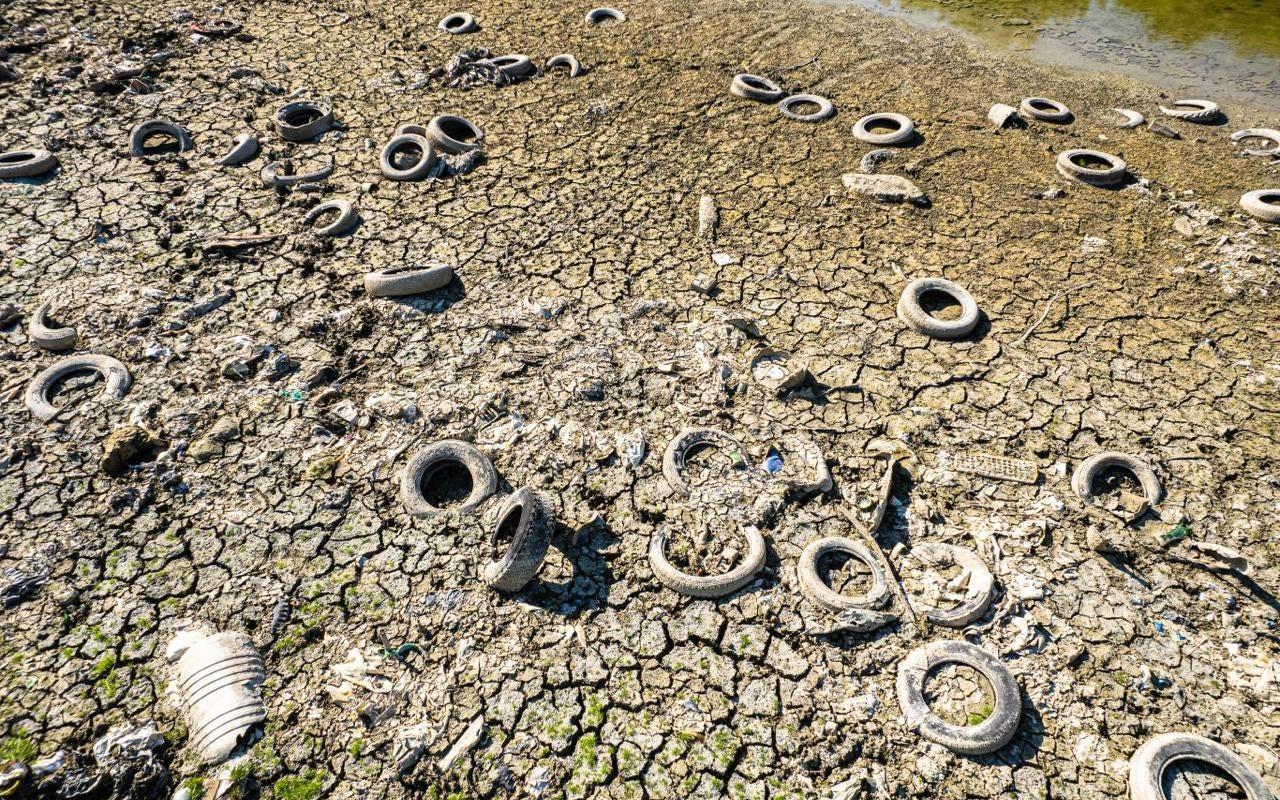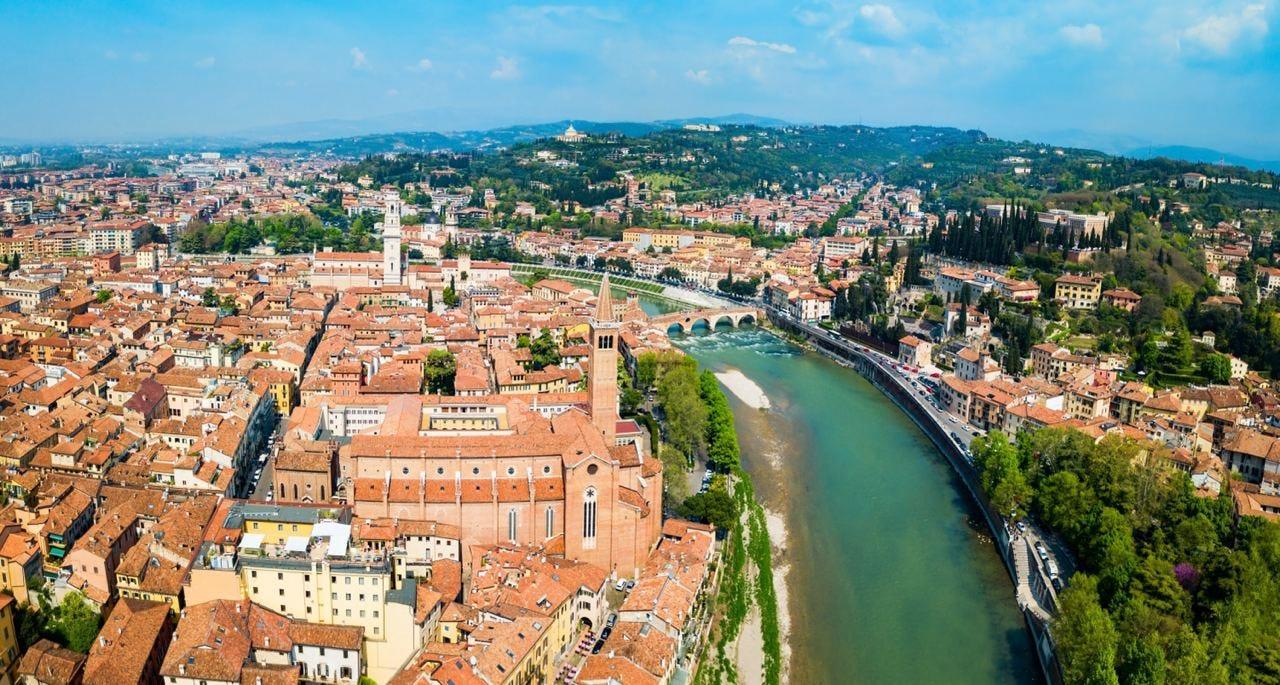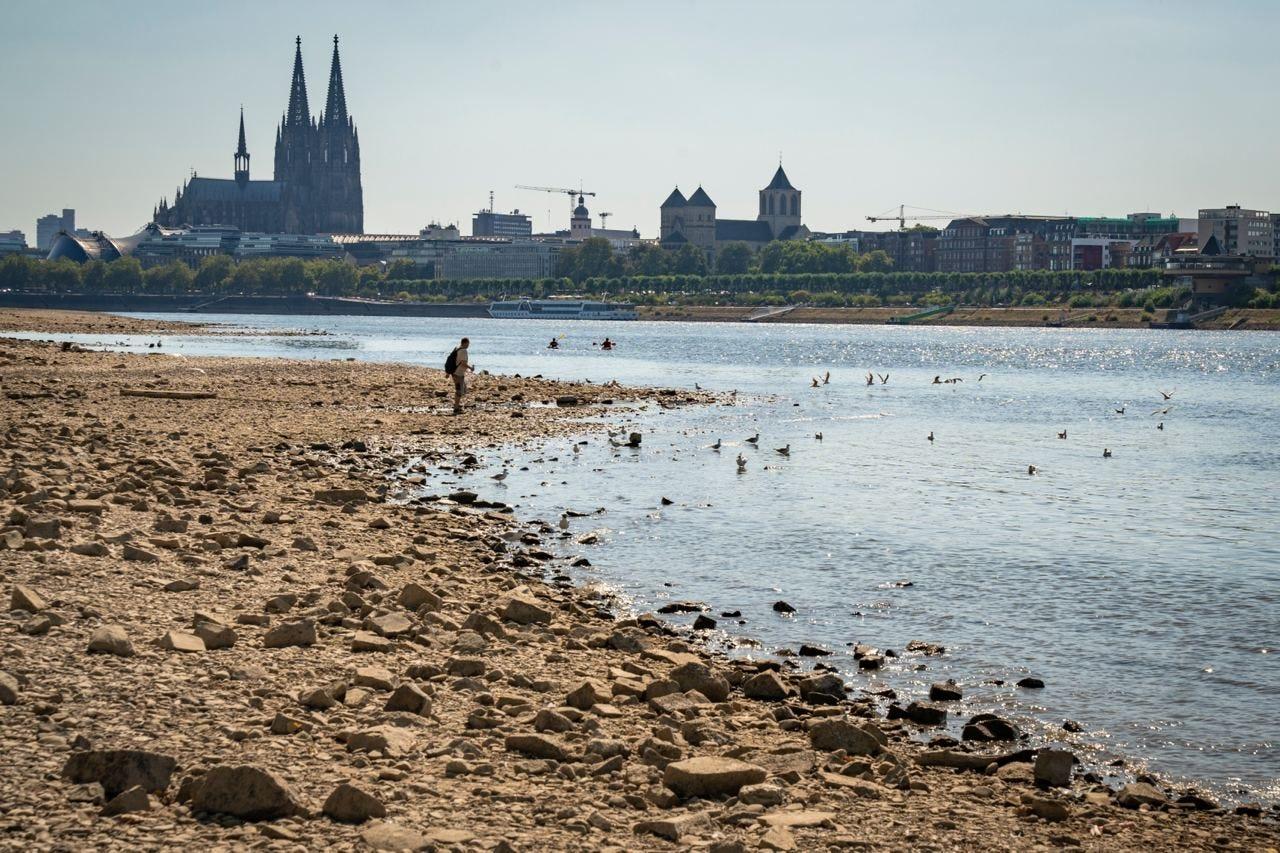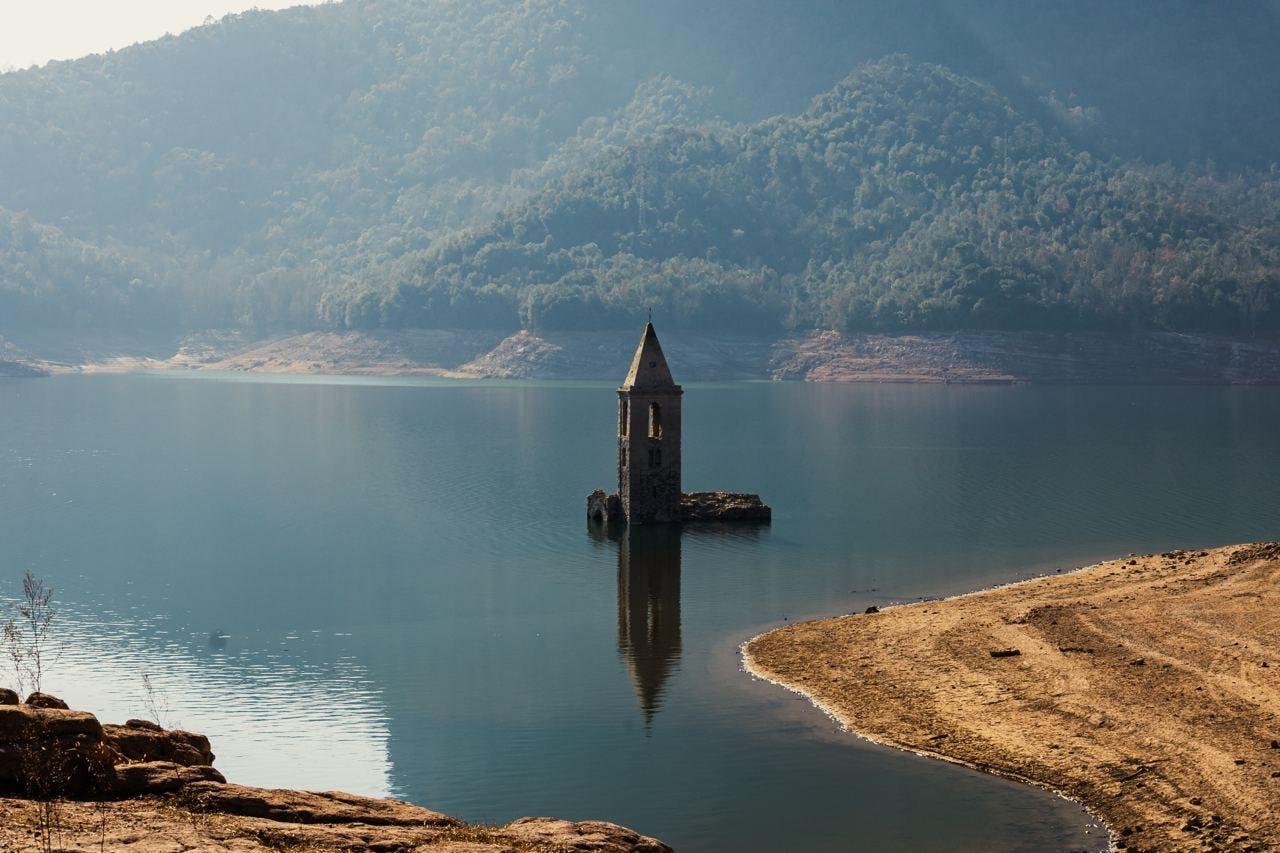· 9 min read

Tires in the Po River (Italy), exposed due to summer drought, July 2022 (Photo: Shutterstock)
The temperature is rising
In March 2023, Professor Szymon Malinowski of the Polish Academy of Sciences predicted that many regions of the Earth would face abnormal drought in the summer. And he was right. According to the scientist, this is one of the climatic consequences of a warm and snowless winter.
In the summer of 2023, the hottest day in history was recorded on Earth at that time — July 4. According to American meteorologists, the average air temperature on this day reached 17.18 °C. The hottest was in Peru, as well as in a number of regions of Canada and the United States. The previous record — 16.92 °C — was set in August 2016. The next temperature record was recorded on July 22–23, 2024. At the same time, scientists noted that the temperature in Antarctica was on average 10 °C higher than average, that is, Antarctica began to react to warming and climate change, and according to meteorologists, this is very dangerous.
Due to the winter drought of 2023, during which the soil froze but there was no snow cover, Europe faced a growing water crisis. In France, 32 days without precipitation were recorded at the beginning of the year. And in Spain, a further drop in the water level in reservoirs and an increase in temperature by 2050 are predicted. In February 2024, the water level in the Po River (northern Italy) decreased by 61% compared to the norm for this time of year.

Shallowing of the Po River in 2022 (Photo: Shutterstock)
An international group of scientists published a study in 2023 stating that over the past 30 years, the water volume in 56% of the world’s lakes has decreased due to human activity and climate change. It is noted that a quarter of the population already lives in regions where fresh water is scarce.
Scientists studied the dynamics of water levels in 1,972 of the largest lakes on Earth from 1992 to 2020, analyzing satellite data, climate, and hydrological models. Every year, large reservoirs that store 87% of the planet’s terrestrial fresh water lose moisture at a total rate of about 22 gigatons. These include lakes in Asia and Africa. There are exceptions: the water level of lakes formed by glacier meltwater and lakes in tropical rainy regions is rising.
In the summer of 2022, a precipitation deficit affected almost all rivers in European countries. This affected river transport and the energy sector, affecting both hydroelectric power generation and the cooling systems of other power plants.
In August 2022, the water level in the Rhine, the largest river by volume, flowing through six countries, fell to its lowest level since 2018. The river was on the verge of closing for commercial shipping due to hot and dry weather in Germany, through which 80% of all European waterborne cargo is transported. In the area of the city of Kaub, the water level was even at 30 cm.
Some countries have taken measures to limit water use. For example, Tunisia suffered from drought every year from 2019 to 2023. Therefore, in March 2023, the government introduced a quota system for drinking water: until September 30 of this year, it could not be used in agriculture. Due to the lack of rain in the region, the capacity of dams was reduced to 30% of their maximum.
In February 2023, the Spanish region of Catalonia reduced water consumption for agriculture by 40% and for industry by 15%. The use of water in parks and gardens is now allowed only for watering trees, and only if they are watered from a watering can. The water limit per capita was 230 liters per day.
The water level in Lake Montbel in France fell by 80% in March 2023. And in northern Italy, tourists walked to the island of San Biagio, which could previously only be reached by boat. The Alps received 63% less snow than usual. Shallow water on the Rhine disrupts barge traffic and increases shipping costs, farmers are reducing their planting area, and countries in the river basin are trying to abandon fossil fuels and support renewable energy sources.
The rivers that feed the Caspian Sea are gradually drying up due to the climate crisis. German and Dutch researchers suggest that by 2100, the Caspian Sea will be 9–18 m below its current level. This could also negatively affect Kazakhstan, where water is taken from this reservoir for drinking and industry, and up to 55 thousand m3 of water is extracted per day. This is the largest reservoir in the country.
The air temperature in the summer of 2022 exceeded the 2021 figure by 0.4 °C, according to a study by the Copernicus climate service. The highest temperatures were recorded in eastern Europe in August, and from June to August the figure exceeded the norm in the southwest. 2022 was the fifth warmest year on record, and Europe experienced its hottest summer.

France’s large Montbel reservoir has dried up by 80% due to low winter rainfall and snowfall (Photo: Unsplash)
Why is this happening?
Climatologists are confident that Europe will continue to break records for high temperatures if the problem of climate change is not addressed. Scientists from the World Weather Attribution initiative, which studies the relationship between climate change and extreme weather, conducted a study and came to the following conclusion: climate change has increased the likelihood of drought by 20 times.
Scientists note that due to the reduction in the area of sea ice in the Arctic regions, heat flows and atmospheric circulation are changing. This causes significant changes in weather patterns and an increase in the frequency of extremes.
Due to the high rate of warming in the Arctic, stationary anticyclones (these are slow-moving anticyclones that remain in one place for a long time) are formed over the European continent, which are associated with hot weather. Consequently, such stable weather patterns as drought are observed more often.
Back in 2018, the German Federal Institute of Hydrology (BfG) published a study where it noted that there was a constant drought that year, and also analyzed the consequences of previous long dry periods. Before that year, everything was within the norm.
The institute’s researchers noted that the lack of precipitation was caused by atmospheric “blocks”, or — in other words — “traffic jams” in the air. They disrupt the circulation of air masses and lead to their long-term stagnation over vast territories. This is how drought occurs, which leads to shallowing.
The “blocks” themselves appear due to climate change and uneven heating of the Earth’s surface. The temperature gradient decreases, and the air is sealed in “traffic jams”. Even then, scientists came to the conclusion that as the temperature rises, such periods of drought will be repeated every year.

The Rhine River in the summer of 2022 (Photo: Shutterstock)
“Dry tourism” 2022
A report by the Joint Research Centre (JRC) of the European Commission in 2022 states that drought combined with abnormal heat has created the strongest stress on water levels in the entire European Union. Water bodies are drying up, the number of forest fires is increasing, and crop yields are suffering.
About 60% of Europe has felt the effects of drought. Germany, France, Spain, Italy, the Netherlands, and others are facing water shortages. This has negatively affected agriculture, industry, food production, river shipping, energy, and has also caused an increase in utility prices. Some experts fear that at some point, freight transport may become unprofitable.
The record drought of the summer of 2022 has also affected China — part of Asia’s longest river, the Yangtze, has dried up. This affected hydropower, stopped shipping, and forced major companies to suspend their operations. Sichuan Province gets more than 80% of its energy from hydroelectric power plants. Chinese authorities issued a national drought warning amid large-scale forest fires and a threat to crops.
The 2022 drought affected two-thirds of France, and about 100 villages were left without drinking water. There was no water left in the pipes, so drinking water was supplied by trucks. Some farmers in France stopped their production — the production of Salers cheese, which had been produced for 2 thousand years, was discontinued due to a lack of water for cows. In the city of Pernes-les-Fontaines, the main attraction — the fountains — was turned off.
Also in the summer of 2022, there was a boom in “dry tourism” in European countries — these are trips to see various attractions that were hidden under water. For example, these are ancient bridges or settlements, ruins of temples.
Tourists observed ships, megaliths, and ruins of churches in the dried-up and shallow river beds and reservoirs. For example, in the village of Prahovo (Serbia), the Danube became shallow and exposed 20 German ships that sank back in 1944.
The Loire River in France — the longest in the country — in the summer of 2022 could be crossed on foot in some places, and its current speed decreased to minimum values.
Shallowing also affected the Valdecanyas reservoir in Spain for the first time in the last 50 years. The prehistoric monument Dolmen de Guadalperal appeared on the surface. The Church of San Roma, which was flooded in the 1960s, has appeared on the Sau reservoir for the second time in history. In previous years of drought, people could only see its spire.

The flooded Church of Sant’Roma appears after the Sau reservoir in Spain runs dry (Photo: Shutterstock)
Uncertain future
As the Rhine and Danube rivers dry up, European countries could face further economic problems. More than 1 tonne of cargo is transported annually per capita through Europe’s canals and rivers. This brings in around $80 billion to local economies.
A third of Italy’s agricultural production is at risk from drought and water shortages. The most important river systems originate in glaciers in the Alps, where the ice cover is shrinking. The drying up of rivers also depends on their active use by the population. According to the UN, around 74% of Spain is at risk of desertification.
Scientists believe that the only way to limit the growing damage from global warming is to immediately reduce carbon emissions. UN Secretary-General Antonio Guterres has expressed concern that human activity on the planet is raising its temperature to dangerous levels. He noted that it is important for all countries to act as one: reduce emissions, strengthen measures to adapt to climate change, and ensure climate justice, that is, to define the problem as political and ethical, and not just environmental. It is important for developing countries to have the resources to adapt and increase resilience to climate disasters, he added.
illuminem Voices is a democratic space presenting the thoughts and opinions of leading Sustainability & Energy writers, their opinions do not necessarily represent those of illuminem.






